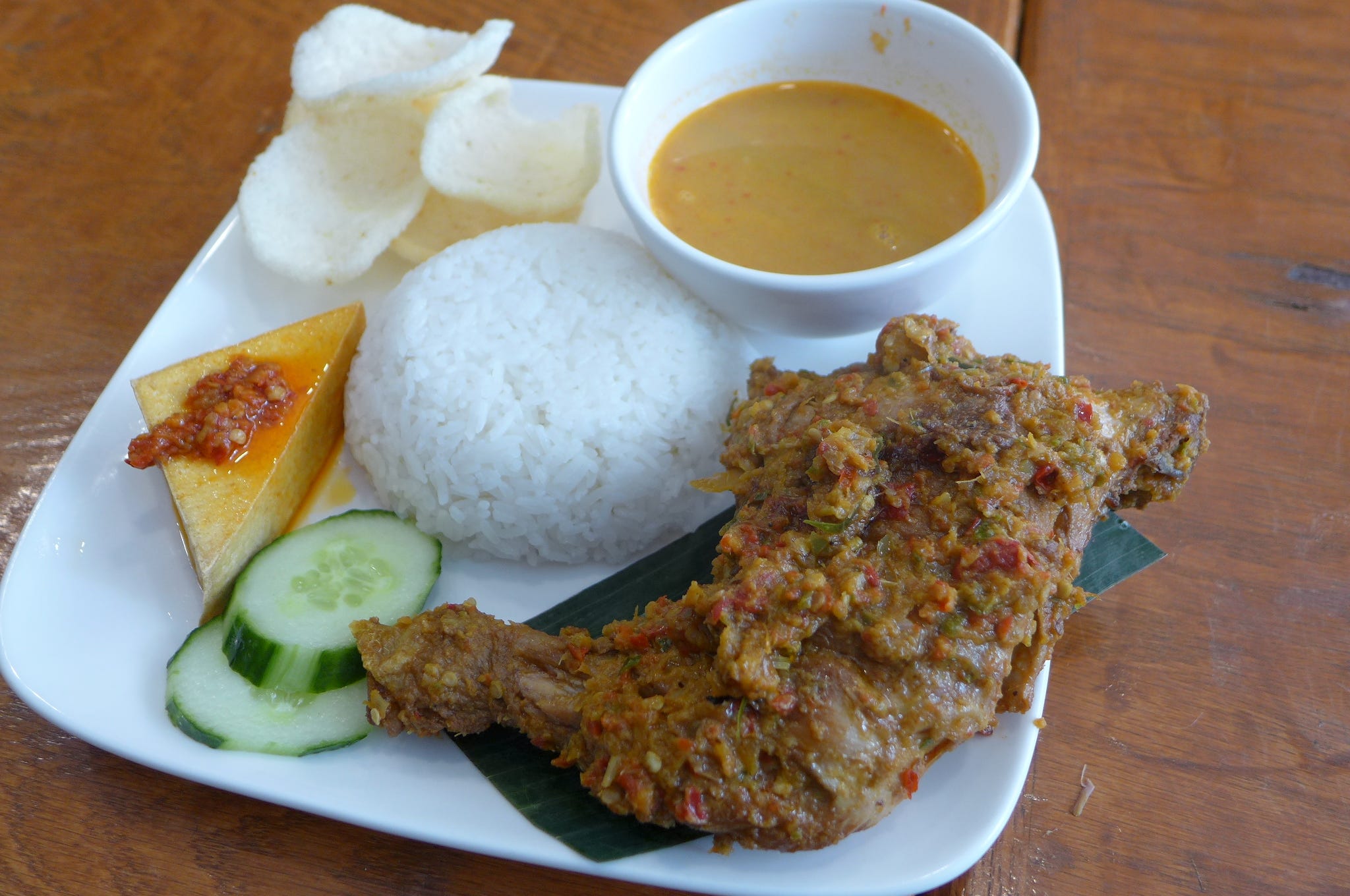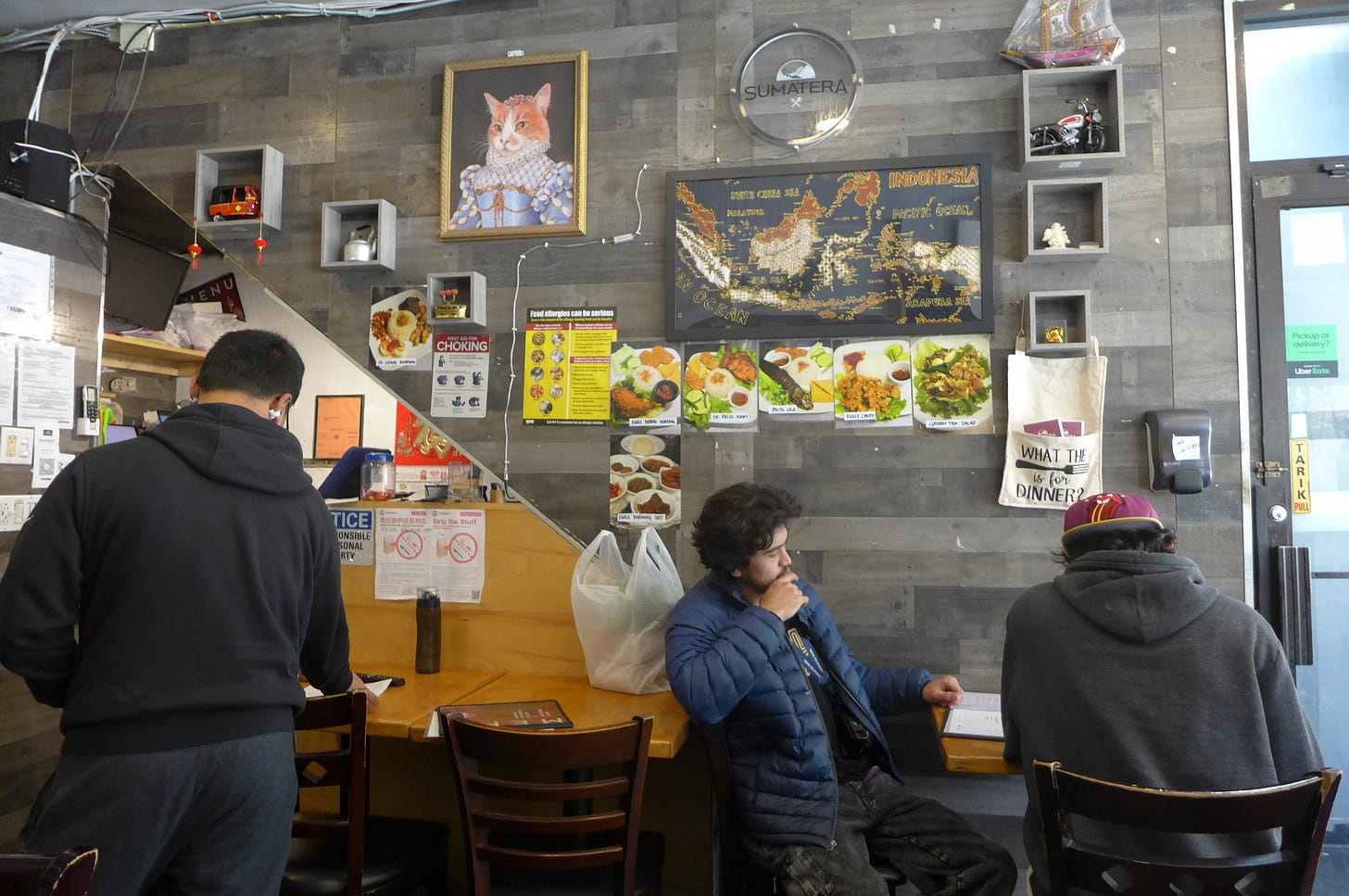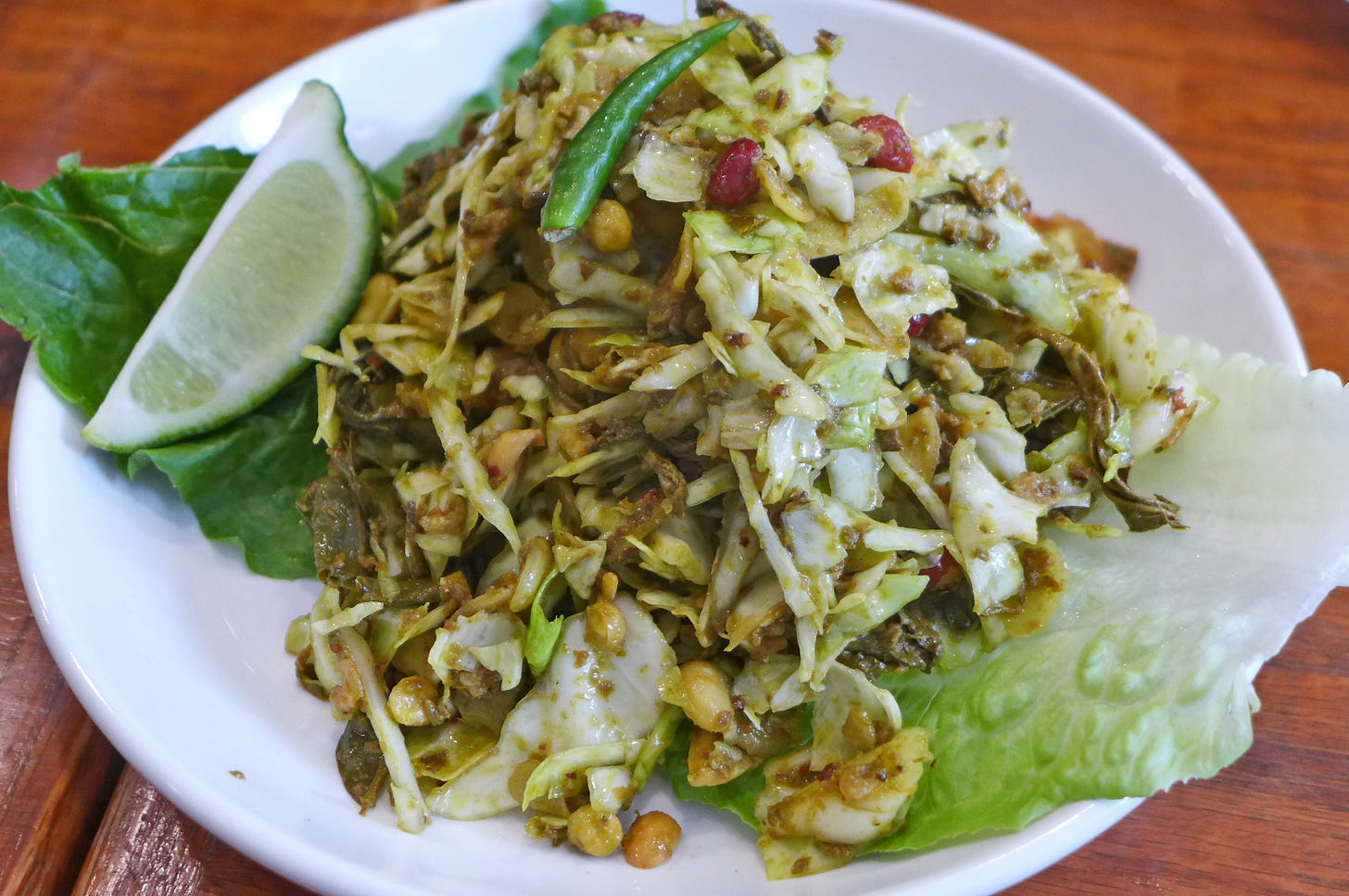A Rare Restaurant Channeling Sumatra Has Opened
Sumatera in Elmhurst serves tongue satays with yellow candlenut sauce, tender BBQ short ribs, and more
Indonesian restaurants have never really had a New York moment: Rarely have we had more than five or six at once. Yes, there have been two restaurants specializing in Balinese cooking, both now closed, and another place that offers a buffet of small dishes called by the Dutch colonial name of rijsttafel. But most have offered food from Java, the dominant island, with a smattering of dishes from elsewhere in the 17,508-island archipelago. And now we suddenly have one focusing on Sumatra, a giant island that lies southwest of Malaysia.
Sumatera (the Indonesian spelling) appeared recently in the shadow of the LIRR just off Broadway in Elmhurst, at 86-20 Whitney Avenue. The small boxy space, which once held Mi Jakarta and then Sky Café, is assertively decorated with a wooden schooner, a map of Indonesia with islands outlined in gold, a couple of miniature mopeds, and, somewhat oddly, a formal portrait of a cat dressed like a queen.
If the rule often is “the smaller the restaurant, the longer the menu,” Sumatera fulfills it. A total of 77 dishes are listed, including well-known things like gado gado (boiled salad with peanut sauce), nasi goreng (spicy fried rice), nasi lemak (an assortment of small dishes with egg and anchovy), and satays. But the standouts are the Sumatran dishes, which demonstrate, among other things, a love for beef, chiles, egg noodles, rice, and complex, sometimes fiery spicing schemes — and little emphasis on peanuts. Most Sumatran dishes are marked as such on the menu, with many attributed to the western city of Padang.
Nasi ayam kapau ($16) is a recipe of the Minangkabau, a matrilineal ethnic group in West Sumatra. And it’s not just any old fried chicken: The half-bird remains crunchy under its mantle of spice paste, which sets your mouth aflame. A mound of rice dominates the center of the platter, and a number of small satellite dishes are arranged around it: sliced cucumbers, creamy chicken soup that doubles as a dipping sauce, and triangle of tofu with a sambal on top.
Nothing better illustrates the uniqueness of Sumatran food than the satay. While the typical form of the dish involves grilled morsels of chicken in a thick peanut sauce, at Sumatera, small cubes of boiled beef tongue are skewered and then flooded with a bright yellow sauce of rice flour, turmeric, ginger, and candlenuts, among many other ingredients. On top of that, fried shallots are sprinkled. The tongue is tender, and the sauce mellow but slightly tart, and if you dig underneath, you’ll find the moist compressed rice cakes called longtong, making an utterly delectable combination.
A signature dish is the beef rendang, often served in Malaysian, Javanese, and even Thai restaurants. Here a variation called nasi iga bakar ($20) features short ribs of beef in a midnight-black sauce, turning them sweet and almost pudding-like. Pickled vegetables and a salty sambal accompany, but then so does a hearty bowl of beef soup. Like many entrees at Sumatera, this constitutes more than a complete meal and the soup doesn’t feel redundant in the least.

And the surprises keep coming. Mayanmar’s famous tea leaf salad is offered in an Indonesian adaptation, causing me to look at a map and note that Sumatra is due south of the former Burma across a 600-mile stretch of the Andaman Sea. The salad is made with fermented tea leaves, and the plate is filled out with cabbage, toasted soybeans, fresh chiles, and tomatoes.
After two visits, some friends and I felt like we were just dipping our toes into the vast pool of the menu. And don’t neglect the beverages, either. Coffee is served with dark and viscous palm sugar syrup rather than white sugar; tamarind juice and sweetened ice tea served in a tall glass are other good choices. But perhaps the most arresting beverage of all is found among the desserts: a green avocado milkshake ($8) with prominent streaks of palm sugar syrup. You may never want to go back to chocolate shakes.









